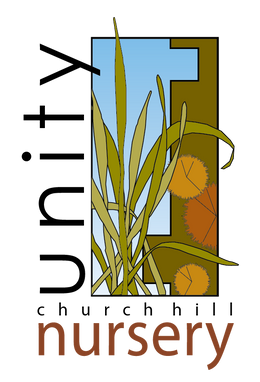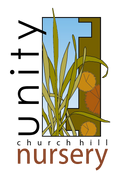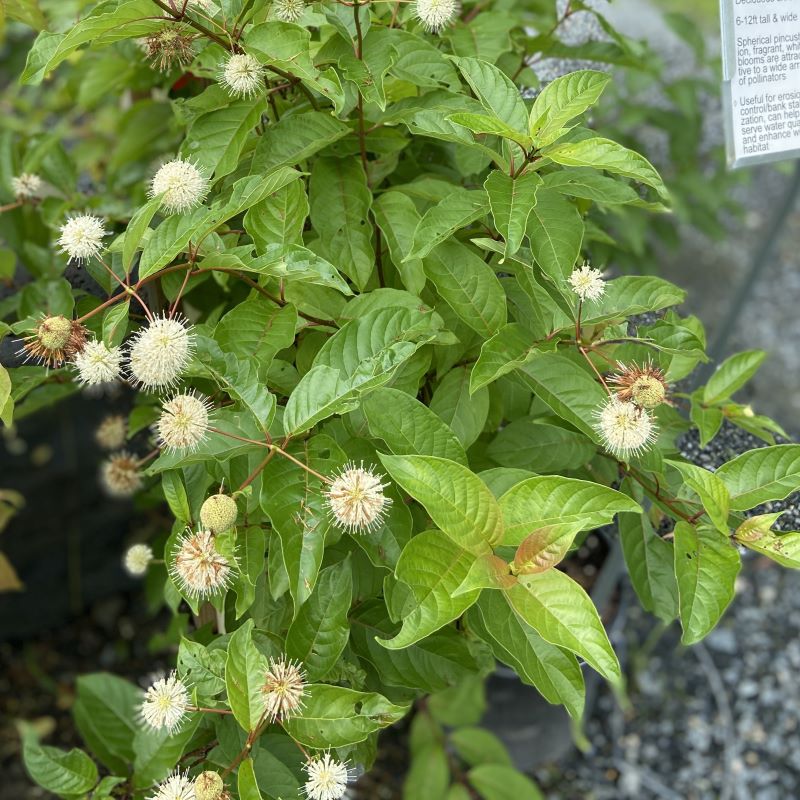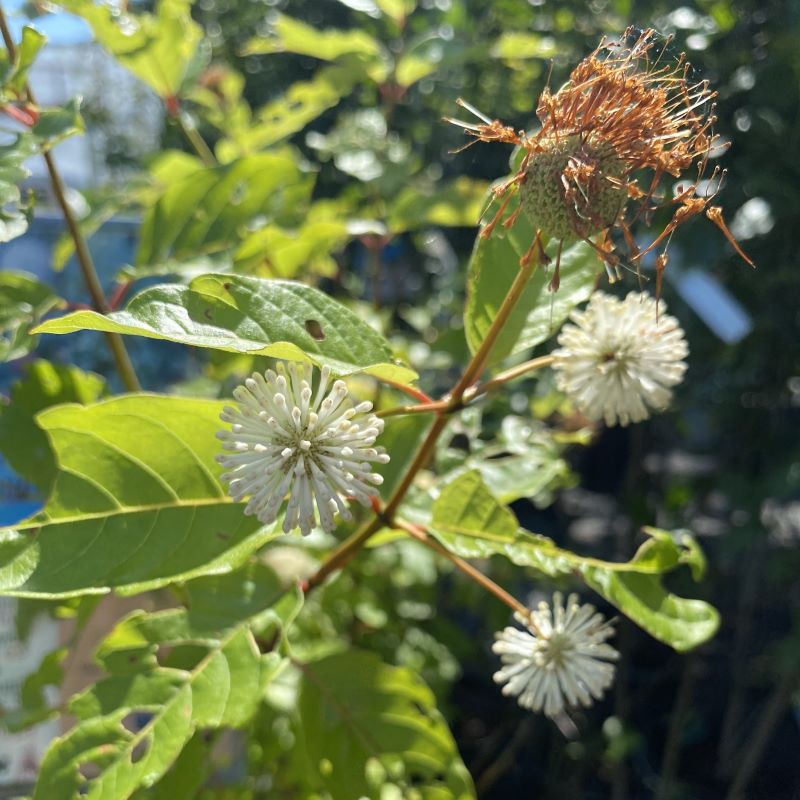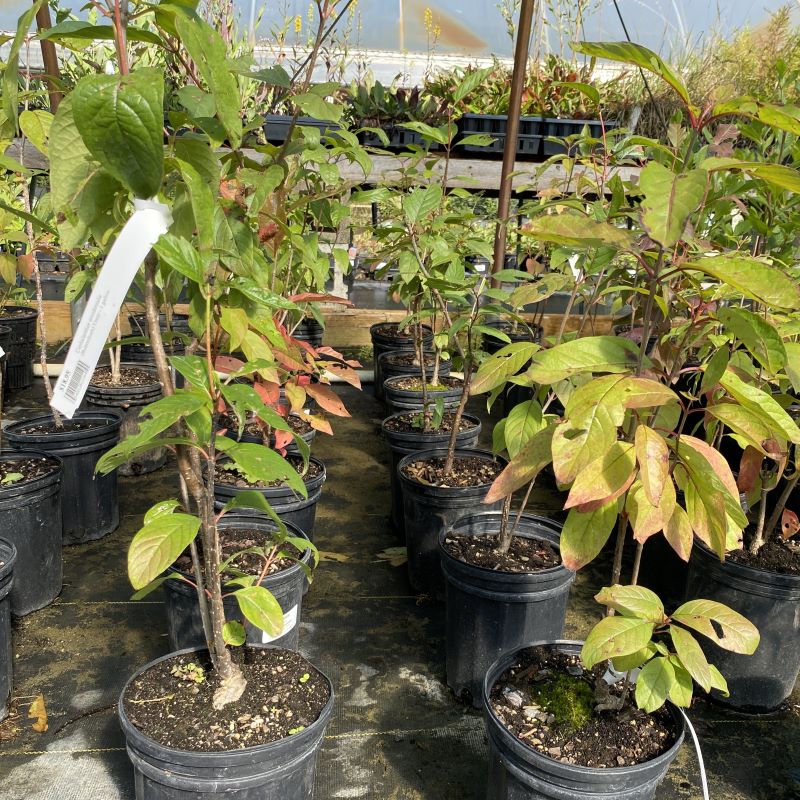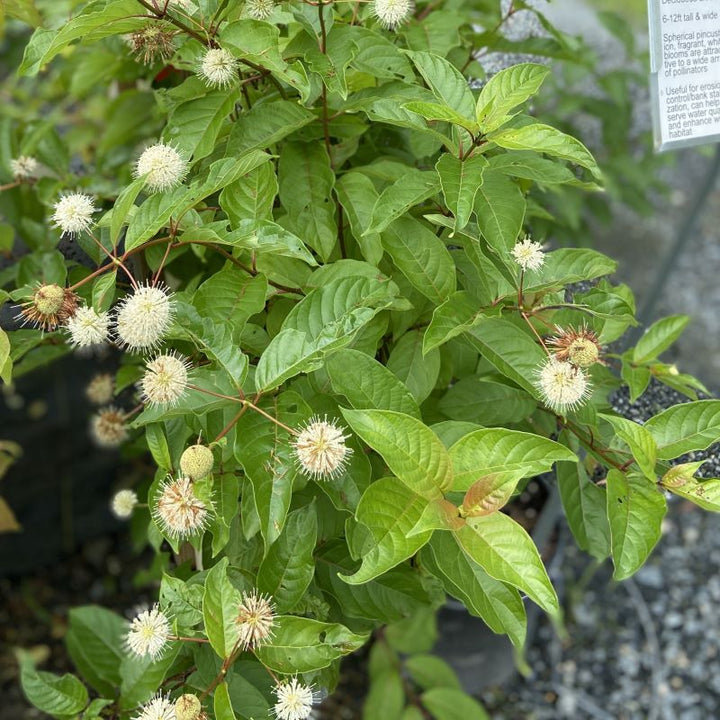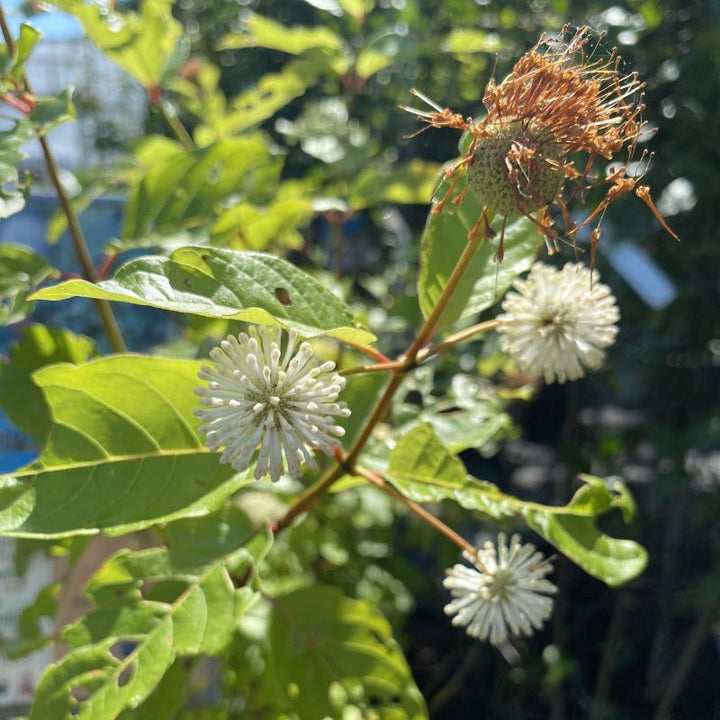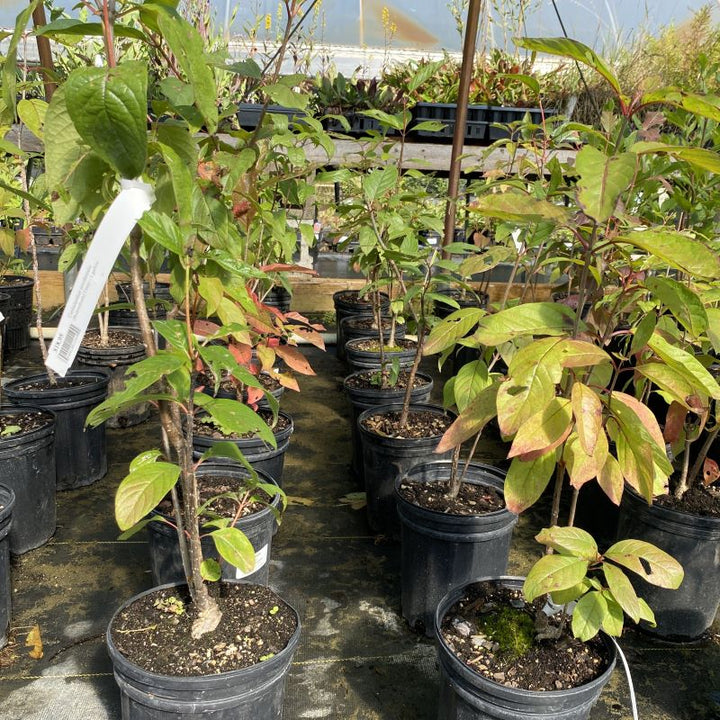Cephalanthus occidentalis (Buttonbush) Unity Grown
- In Stock
- Inventory on the way
Cephalanthus occidentalis, commonly known as buttonbush, is a large deciduous shrub native to much of the eastern United States, as well as some of the southwest. Capable of growing to mature sizes of up to 6-12' tall and 4-8' wide, buttonbush is found in the wild on riverbanks and in other wet or swampy areas. Used widely in rain gardens, or as an attractive centerpiece to a pollinator garden with wetter soil, buttonbush can tolerate standing water and occasional flooding; though it prefers wetter soils, Cephalanthus occidentalis is very adaptable to a wide range of soil types and even standing water and some salt content.
From June to September, buttonbush produces small, fragrant, white flowers in ball-shaped clusters, giving the flower heads an appearance similar to a pincushion; flowers are highly attractive to pollinators, especially bumblebees and a variety of butterflies. Once pollinated, flowers turn to hard, showy, reddish-brown fruits, which are full of seeds and persist into winter, adding seasonal appeal and serving as a winter food supply for a variety of small birds and mammals; since they tend to grow near bodies of water, this list may also include ducks and beavers! Cephalanthus occidentalis is a great addition to wetland restoration projects, any watery landscape, any low-lying garden environment, or those that have issues with drainage, but also works beautifully as an ornamental selection almost anywhere within the landscape.
